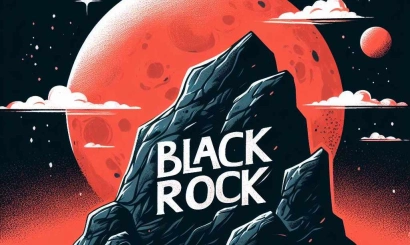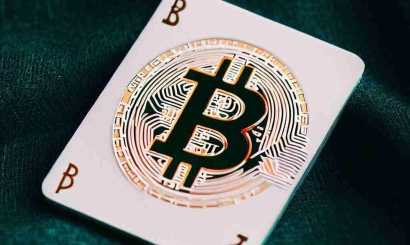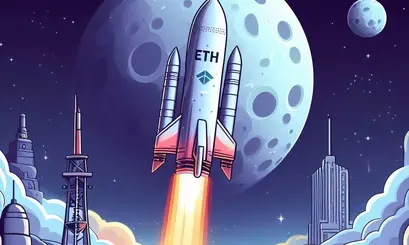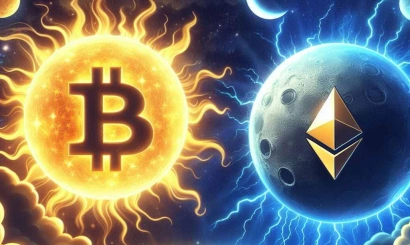What's happening in the NFT market? Who earns during the price collapse?
In July, prices for CryptoPunks, Bored Ape Yacht Club, and other NFT collections sagged by more than 60%
CryptoPunks, Bored Ape Yacht Club, and other popular NFT collections shed more than 60% in July. Let's talk about market trends, current trading opportunities, and future prospects
In early July, the prices of well-known and best-capitalized NFT collections, which are considered the blue chips of the market, dropped sharply. Collections such as CryptoPunks, Bored Ape Yacht Club (BAYC), or Azuki fell in price by more than 60% in just one month. This is attributed to market trends, but even a bearish period leaves traders with opportunities to make money.
BAYC, which is backed by Yuga Labs, saw its floor price fall below 30 ETH for the first time since October 2021. At the time of publication, the price has recovered to 32 ETH (about $60 thousand), but it is still far below the historical high of $370 thousand in April 2022. The news that singer Justin Bieber bought BAYC image #3001 for $1.3 million (500 ETH at the exchange rate at the time of purchase) had fallen in price more than 20 times by early July was widely circulated on the web.
Image of BAYC #3001 from the Bored Ape Yacht Club's NFT collection. Source: opensea.io
The fall in the NFT market comes against the backdrop of Bitcoin's rise. While NFT prices have been falling systematically since the beginning of the year, bitcoin has continued to go to new yearly highs, and now its year-to-date return is over 80%. Most altcoins have also been rising in value, but less aggressively. This is evidenced by Bitcoin's growing dominance - for the first time since April 2021, the figure exceeded 50% of the total crypto market capitalization.
Along with the fall in prices on the NFT market, the volume of trading on the platforms decreased significantly. This indicator can be seen as a marker of interest in the market, and low volume indicates fewer participants. According to NFTGo data, for the month, total daily NFT secondary trading volume fell 55% from $22 million at the end of June to $10 million or lower.
Copyright royalties (royalties) from NFT creators have also hit a two-year low. According to a recent report from analytics platform Nansen, weekly royalty payments peaked at $76 million in April 2022, before falling 95% to $3.8 million by the end of June. Royalties are directly related to trading volume - many NFT projects include a commission on secondary transactions when creating collections, which is paid to them in the form of royalties and serves as revenue.
In addition, the aggregate volume of royalties has sagged as some trading platforms have made them optional in order to attract traders. Market leaders Blur, OpenSea, Magic Eden, and LooksRare have done so. Thus, the reduction in trading volumes and changes in market structure have led to a marked decline in royalties as the main source of income for companies and teams behind NFT projects and art creators.
-
The "whale" games
The fall in NFT prices and trading volumes has also been attributed to the growing dominance of the Blur platform. It is initially aimed at more professional traders and speculators, but due to its scale, transactions on it inevitably affect the entire market. After the launch of its own token BLUR and its notorious airdrop (free distribution among active users) in February this year, Blur has implemented a user reward program where traders receive their own tokens for placing orders and listing NFTs.
Traders on Blur with significant capital ("whales"), who can afford short-term losses, sell large NFT positions they previously purchased en masse and then buy them back again, receiving more tokens through more trades. This is called "farming" (farming) of tokens. Selling these tokens in the future is likely to compensate them for their losses.
Such activity increases selling pressure and collapses minimum prices in collections. It also provokes panic selling by smaller traders, some of whom in addition take out loans to trade against NFT or other crypto-assets in specialized services. The combination of these factors results in fewer new users entering the market or acting as a buyer of last resort.
However, there is a contrary view that token farming increases liquidity in the marketplace. Those traders who engage in it are incentivized to place more assets on it, thus preventing an even greater collapse in NFT prices.
The resulting farmed tokens are actively traded on exchanges - at the time of publication, the price of BLUR is near an all-time low of $0.30, according to CoinMarketCap. This is almost 80% below the all-time high of $1.40 reached in late February.
-
Opportunities and trends
Like the broader cryptocurrency market, the NFT market is likely to continue to exhibit cyclical price dynamics. As new projects emerge in the sector, bullish cycles occur, leading to increased innovation and adoption of new technologies. This eventually leads to the emergence of lower-quality projects and then a market crash and the start of a new cycle.
The NFT sphere could, in theory, benefit from the gaming business. Blockchain games have become a popular destination for Web3 venture capitalists, with investments in the sector estimated at $10 billion. Many of these games involve using NFT to represent ownership of in-game assets or players' digital avatars. However, developing truly high-quality, high-budget games can take several years, so it's not yet obvious which developers can take on this niche and carve out a leadership role in it.
The NFT market has long gone beyond just marketplaces like OpenSea or Rarible, where new NFTs can be released or traded with other users. There are credit services or platforms for trading derivatives on NFTs from large collections, allowing you to speculate on NFTs without actually owning them.
For those who believe that bearish trends in NFTs will continue, there is an opportunity to capitalize on a short position (a "short"), much like in the traditional or cryptocurrency markets. To do this, you can use credit platforms such as NFTfi, Arcade, or the Blend service on the Blur platform. To "short" NFT, a trader first identifies a collection that he believes will decline in value. He then uses a lending platform to borrow NFTs, sells the asset at the current market price, and then re-buys it at a lower value, after which he closes the loan.
Because such platforms require lenders to actually own the underlying asset, borrowers can only "short" NFTs from the largest and most liquid collections. Those who, conversely, believe in a rising market can use these same platforms to borrow against their NFTs, accumulating more assets and profiting if the market goes into a bullish phase.
Perpetual futures trading platforms for specific NFT collections, such as NFTPerp, allow speculation on the floor prices of popular collections without having to own the underlying assets. However, this is still a new market segment and the services are highly dependent on external data providers (so-called oracles) that can distort the data, which creates corresponding risks. In addition, as in the traditional market, there is a margin called risk when trading NFT futures.
To assess the prospects of specific collections, it makes sense to follow their community in social networks, in particular, the extent to which their creators fulfill the points of roadmaps - plans for the development of the project. It is also useful to look at market trends in general.
In addition to collectible NFTs or blockchain games, there are NFT-related initiatives from big brands or, for example, music NFT platforms. For example, in July, the Sound service raised $20 million from investors including Andreessen Horowitz's largest crypto fund (a16z crypto). The platform allows trading musical compositions in the form of NFTs, and musicians placing compositions on it have already collectively earned more than $5 million.
- Cryptocurrency exchange KuCoin will lay off 30% of its staff
- Fundstrat: Bitcoin could rise to $180k before halving in 2024
- Tokens for iris. What are the chances of the new project of the creator of ChatGPT?
- Decentralized exchanges began to lose liquidity and market share
- FTX sues Bankman-Fried for $1 billion in damages
- Congressman compares government digital currencies to the Death Star
- Binance and other major crypto exchanges to list Worldcoin




_410x245_00e.webp)


